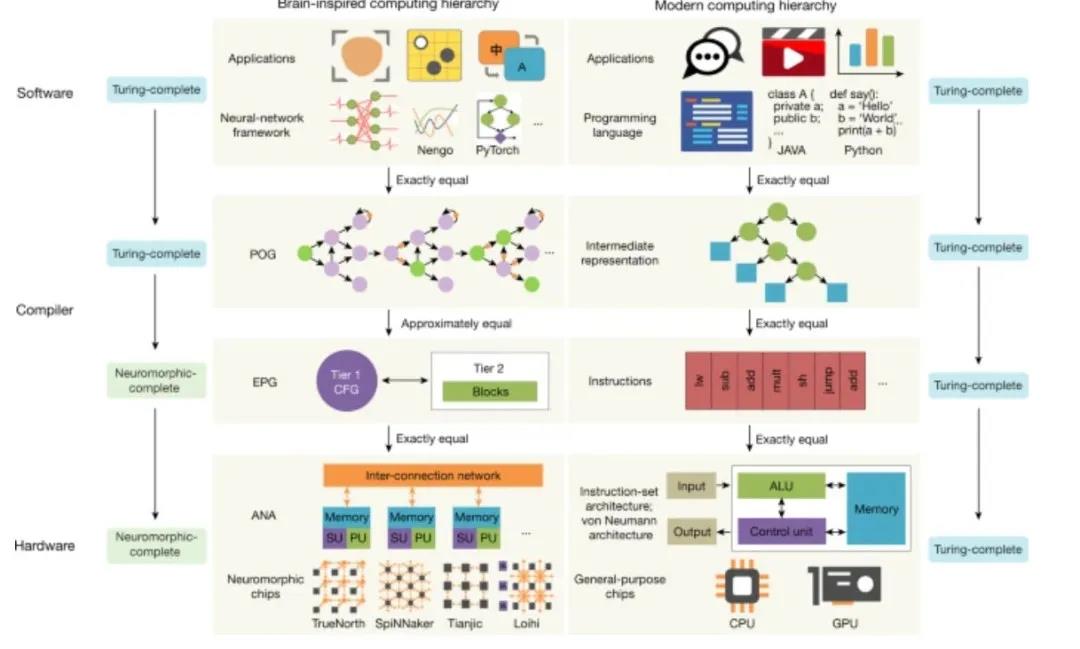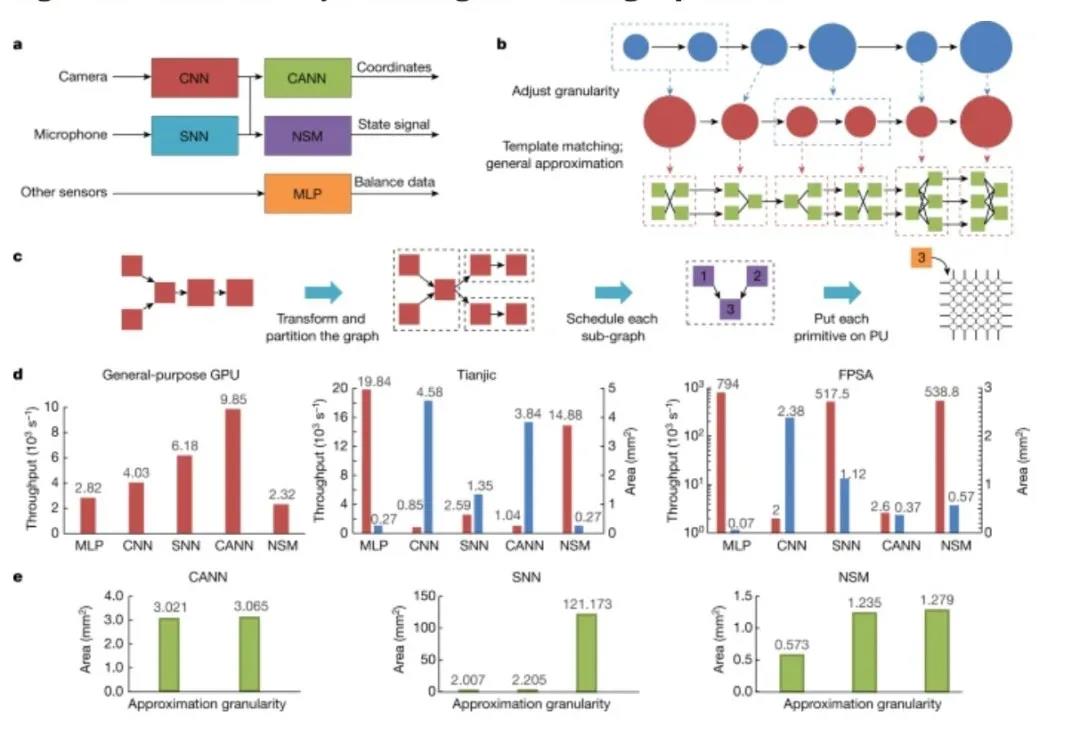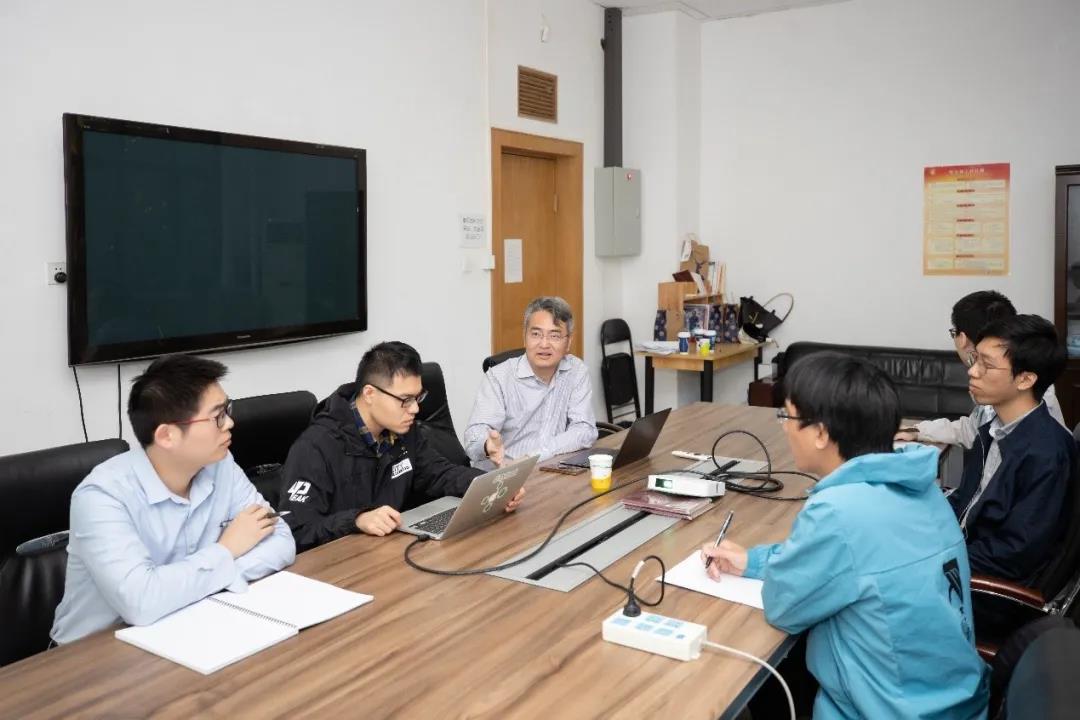On 14th October, a joint team consisting of Professor Zhang Youhui’s team from the Department of Computer Science and Technolgy (DCST), and Professor Shi Luping’s team from the Department of Precision Instrumentation and their collaborators, published a paper entitled "A system hierarchy for brain-inspired computing" in Nature.
With this, Tsinghua University has completed three consecutive publications of Nature in the field of brain-inspired computing in the past 14 months.
Corresponding to the "Turing completeness" concept of general-purpose computers and "von Neumann" architecture, this research first proposed "neuromorphic completeness" , a definition that relaxes the constraints on the calculation process and accuracy of the system, compared with general-purpose computers.

The team further proposed a corresponding computer hierarchy and hardware primitives to ensure the completeness of brain-inspired computing to make full use of the advantages brought by this new completeness. The hierarchy has three levels: a Turing complete software model; a neuromorphic complete hardware architecture; a compilation layer between the above two; and a constructive transformation algorithm, designed to convert any Turing computable function into an equivalence on any neuromorphic complete hardware.
Furthermore, a software toolchain was built to support three types of hardware which can greatly improve the system optimization space, and then significantly improve the system efficiency, as showed by testing with both neural network applications and non-neural network applications.The co-first authors of the paper are Zhang Youhui, a Professor in DCST of Tsinghua University, Qu Peng, a postdoctoral fellow, Ji Yu, a doctoral student, and Zhang Weihao, a doctoral student in DPI.

The co-corresponding authors are Zhang Youhui and Professor Shi Luping. Other collaborators include Professor Wenguang Chen of DCST, Professor Weimin Zheng of DCST, former Visiting Professor of DCST/Professor of the Department of Electronic and Computer Engineering at the University of Delaware Gao Guangrong, and teachers from DPI, the Department of Biomedical Engineering, and the Department of Automation.

Brain-inspired Research in Tsinghua University
Tsinghua University attaches great importance to the field of brain-inspired computing and adheres to organized scientific research. In September 2014, it established the Center for Brain Inspired Computing Research (CBICR), composed of seven departments, which integrates disciplines of brain science, electronics engineering, microelectronics, computer science, automation, material science and precision instruments to cover a full range of brain-inspired computing research; the Director of CBICR is Professor Shi Luping.
In recent years, CBICR has proposed a new type of brain-inspired computing architecture that conforms to the basic laws of brain science—Tianjic chip architecture, which can simultaneously support the neural network models of computer science and neuroscience, and give full play to their respective advantages. At present, the Tianjic chip has been developed to the third generation, providing a platform for the academic community to develop AGI, which will promote the research and empower all walks of life.
Looking forward to future development
The next decade will be the golden age of computer architecture development, and brain-inspired computing is one of the most promising solutions. The design idea of brain-inspired computing system proposed by Tsinghua University is to add a brain-like computing chip on the basis of existing computer architecture, thereby introducing spatial complexity and spatial-temporal complexity. Existing computers mainly deal with structured information, while brain-inspired chips are good at processing unstructured information.
This design philosophy can not only maintain the advantages of existing general-purpose computers, but also use a brain-inspired chip to improve the ability to process unstructured information. At the same time, we will adhere to the technical route of the fusion of computer science and neuroscience, and make full use of the characteristics of emerging non-volatile storage devices (including memristors), develop new computing models and algorithms suitable for these devices, and build a completely new type of intelligent computing system.